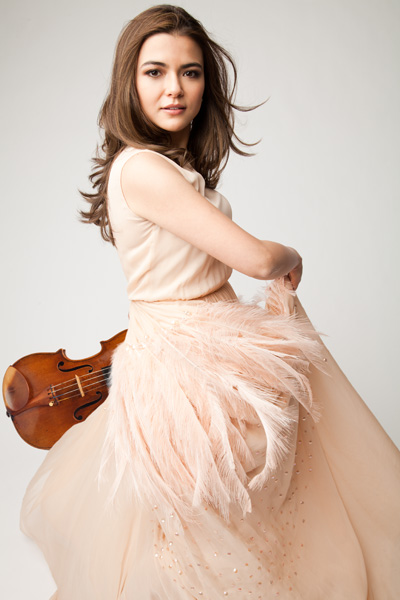Lintu, Grant Park Orchestra soar with Sibelius

The meteorological gods threatened Friday’s Millennium Park concert with cloudy skies, yet a few raindrops apart, the sun eventually peeked through and the concert took place in agreeable weather and fine style.
In his second program of the week, Hannu Lintu showed once again why he has become such a favorite with the Grant Park Orchestra, leading fiery and idiomatic performances of Sibelius and Glazunov at the Pritzker Pavilion.
Though not one of Sibelius’s more frequently performed tone poems, Pohjola’s Daughter is one of the Finnish composer’s finest works in the genre. The 17-minute work draws from the composer’s favorite source material, the national epic, the Kalavela—and, in this case, mines the tale of the central character Väinämöinen’s ill-fated courtship of Pohjola, daughter of the ruler Louhi.
The Grant Park Orchestra is a flexible and reliable band that can deliver convincing performances of a wide range of repertory. But there is something in its corporate sound—lean, bracing, and eruptive—that suits Sibelius especially well, as shown by the evocative performance of Pohjola’s Daughter.
Walter Haman’s deep, dark cello solo set the right tone of foreboding, and Lintu led a performance that conveyed the cool Northern atmosphere and sheer strangeness of this music. Sibelius’s handprints emerged organically—like the emphatic brass chords against rolling string writing—and Lintu’s taut yet spacious direction brought out the music’s latent power, culminating in a refined and daringly hushed coda that hovered on the edge of audibility.
Few concertos seem as naturally suited to alfresco performances as Sibelius’s Violin Concerto, the elemental power and austere, wind-swept profile of Sibelius’s distinctive style an ideal fit for outdoor venues.
Karen Gomyo returned as solo protagonist, and for the most part delivered the goods in vital and satisfying fashion. Gomyo seemed more in synch with the fireworks than the cool lyricism, and at times, especially in the Adagio, one wanted a little more expressive nuance and Northern sensibility—a less emphatic approach and lighter bow arm would have helped. Still, her gutsy, no-holds-barred style brought undeniable excitement and the violinist blazed through the galumphing finale’s bravura with impressive sheen and virtuosity.
Lintu provided a rich-toned and magnificent orchestral accompaniment that blended muscle, tonal refinement and rhythmic insistence in a finely judged balance. How about a multi-season Sibelius symphony cycle from the Finnish conductor and the Grant Park Orchestra?
Student of Rimsky-Korsakov and teacher of Shostakovich, Alexander Glazunov these days is a figure more read about than performed. While prolific as a composer, few of his works are heard these days, apart from infrequent airings of his concertos for violin and saxophone.
Glazunov wrote eight symphonies and, once in a while, some enterprising conductor will poke one with a stick to see if it’s still alive. In this case it was Glazunov’s Symphony No. 4, the centerpiece of Friday night’s concert.
The Fourth Symphony is emblematic of Glazunov’s works in the genre—melodic, well crafted yet rather academic with a lack of a strong individual voice. The first movement opens with a dark lyrical theme, leading to a bucolic English horn solo, the music attractive and smartly orchestrated, like Rimsky without the good tunes. The perky middle movement is charming and the finale lively enough, though Glazunov didn’t quite seem to know how to end the piece.
Lintu and the Grant Park musicians served up a performance of great warmth, urgency and conviction, but even advocacy on this level isn’t enough to make one think we’re missing something by not hearing Glazunov symphonies more regularly.
The program will be repeated 7:30 p. m. Saturday at Pritzker Pavilion. Admission is free. gpmf.org.
Posted in Performances




